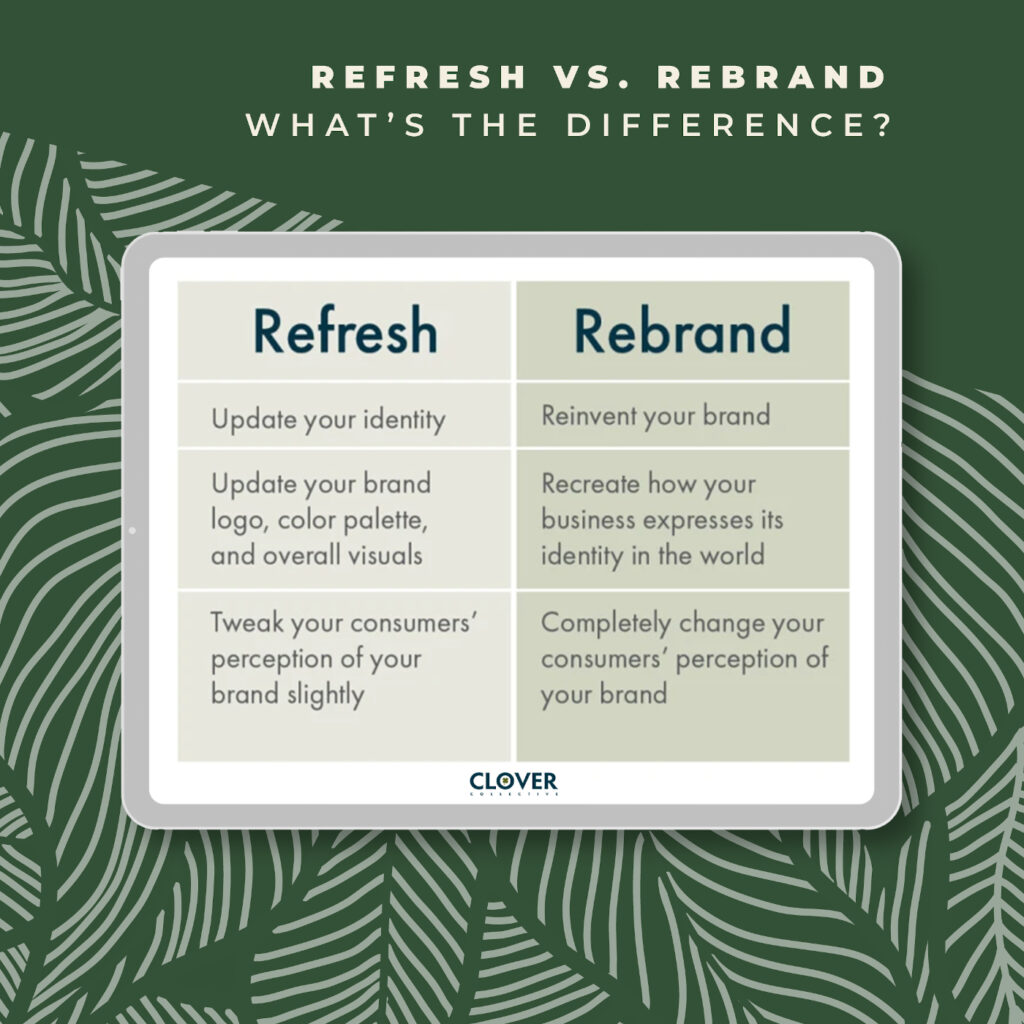A business’s brand is its defining characteristic. Branding communicates not only what a company offers customers and clients, but also its personality and culture. When branding is done right, consumers perceive a corporate identity with some charisma. Maybe it’s sophisticated and upscale, practical and down-to-earth, fun and forward-thinking, or perhaps even a bit mischievous. While providing a stellar product or service is crucial to success, branding helps companies convey a customer experience essential: a desire to connect emotionally with their target market. The message: “We understand you. We’ve got your back. We care.”
For a variety of reasons, companies sometimes want or need to update their image or, in extreme cases, entirely reinvent themselves. Perhaps the market or consumer tastes have evolved. Maybe there’s been a public relations mishap. Occasionally, companies adopt an entirely new concept — they’ve matured, or they want to enter a new market or attract a broader customer base, for example.
Two types of image updates can help companies achieve their goals: refresh or rebrand. An experienced agency can assist companies in deciding which is right for them and accomplish the task in a professional manner.
Clover Collective, an award-winning branding and design agency based in Austin, Texas, and Washington, D.C., helps clients nationwide elevate their images. Founders Tina Caye and Brionne Griffin designed their own brand to express youthful enthusiasm, professionalism, and fun. They refer to their clients as “accomplices in creating bigger, better things,” subtly suggesting collaborating with Clover will be a playful professional experience, not a chore.
“We started Clover because we were working for in-house teams and constantly cleaning up agency work that wasn’t hitting the mark, didn’t follow the brief, wasn’t true to the brand, sometimes just wasn’t well done, and was costing a fortune,” Caye said. “We knew clients deserved great creative work that aligns with the brand and hits the mark for its target for way less than the ‘big guys’ charge.
“Plus, it’s just plain fun,” she added.
Refresh or rebrand?
One of their first tasks, the team said, is helping clients determine whether a refresh or rebrand (also called a brand redesign) is right for them. While the concepts may seem similar on the surface, there are stark differences between the two. “Think of a refresh as a makeover—new clothes, new hair, etc.” Griffin said. “A rebrand is more like a bit of therapy—changing your key attributes and the way you present yourself in the world.”
The primary purpose of a refresh is to tweak a company’s visual representation in order to keep up with the times and its market. Changes usually encompass elements like logo, colors, and overall design concepts. Companies typically embark on a brand refresh when they’re satisfied with their relationship to the market but feel their image has grown stale or design trends have changed enough that they’re embarrassed to hand out business cards or direct potential customers to their website.
Rebranding, on the other hand, constitutes a complete overhaul of not only visual elements, but also messaging and the brand’s “voice.” A rebrand typically changes the company’s emotional resonance by modifying the way potential customers perceive every element of its existence. Perhaps the company or the market has undergone a significant evolution, there’s been a public relations mishap, or the organization wants to enter a new marketplace or expand its reach. When a company struggles to capture the attention of its target market and the top talent in its field, it may be time for rebranding.

Refreshing and rebranding also require very different emotional, time, and budget commitments. To rebrand effectively, a company must be willing to make major structural changes and completely reinvent itself. Rebranding can require six to eighteen months of effort and cost between $60,000 and $200,000 for smaller companies. The larger the company, the bigger the commitment. British Petroleum, for example, spent $185 million to rebrand after a series of refinery and drilling rig disasters left the company with a monumental image problem. In contrast, for the same smaller companies a brand refresh generally takes two to three months and an investment of $15,000 to $50,000.
Mission: Possible
Whether a company desires to refresh or rebrand, the organization must understand its market — current and potential — and establish clear goals. Defining demographics, psychographics, and the personas within each cohort is essential, according to Caye.
In addition, employing an expert branding team can make the difference between sizzle and fizzle. Caye recommends working with a team that incorporates seasoned professionals in disciplines including brand strategy, graphic design, web design and development, copywriting, and social media.
To achieve the best outcome, plan to complete an honest evaluation of current branding efforts before embarking on new ones.
“We start all of our engagements with what we call the ‘curate’ phase,” Griffin said. “This is where we take an in-depth look at a brand to explore its specific needs and pain points. Think of this step as curating existing marketing collateral and brand positioning to keep what’s working, refresh what’s not, identify any gaps, and define business goals.”
Above all, she said, “find a company that wants to understand your target audience before doing any work.”
For more information about Clover Collective, visit CloverCollective.com.








